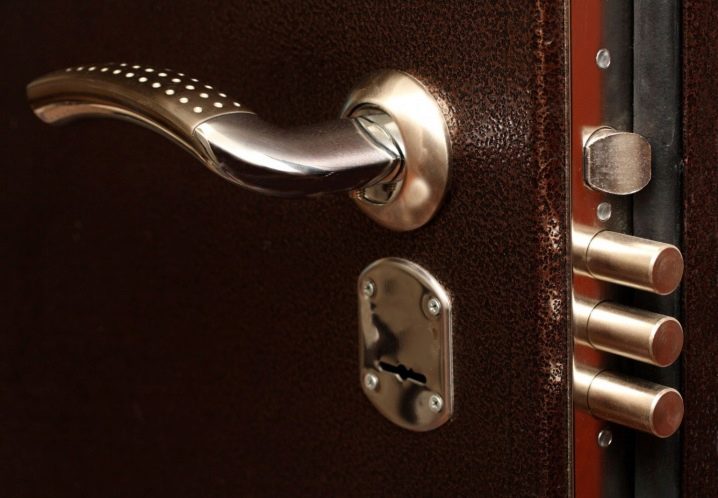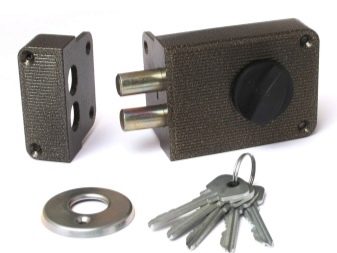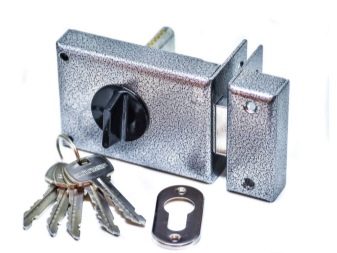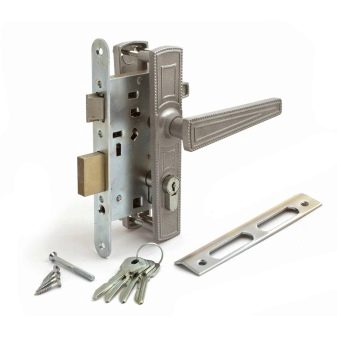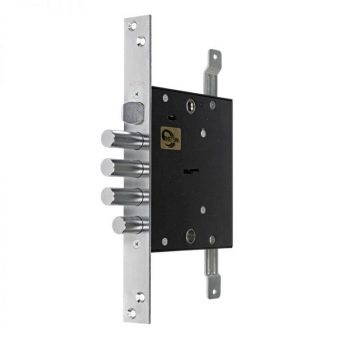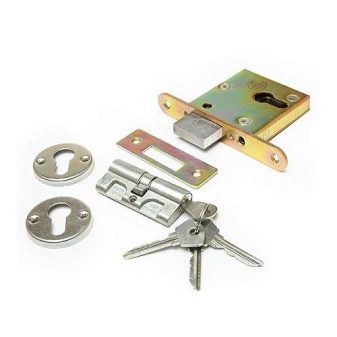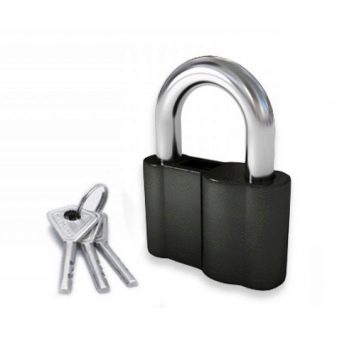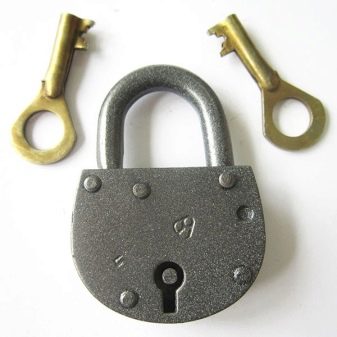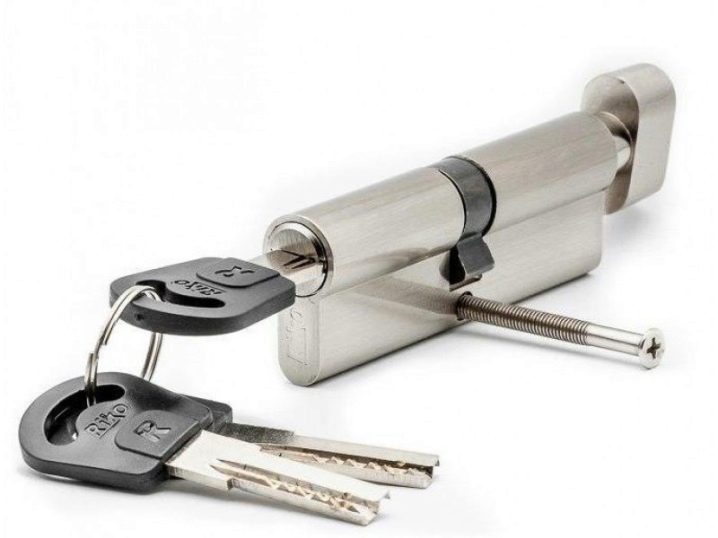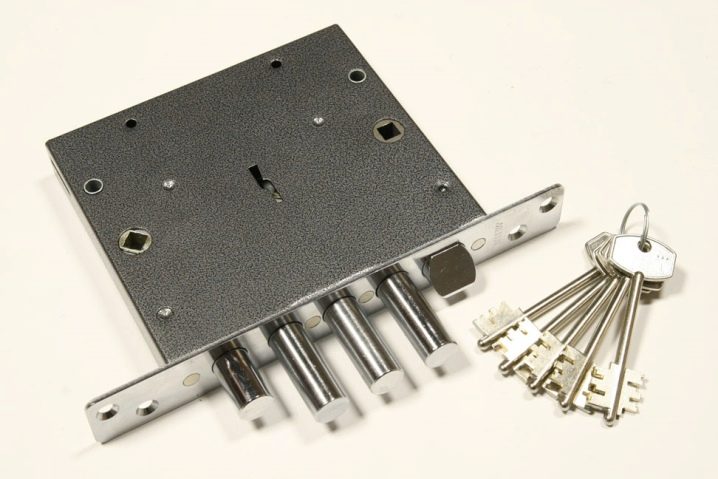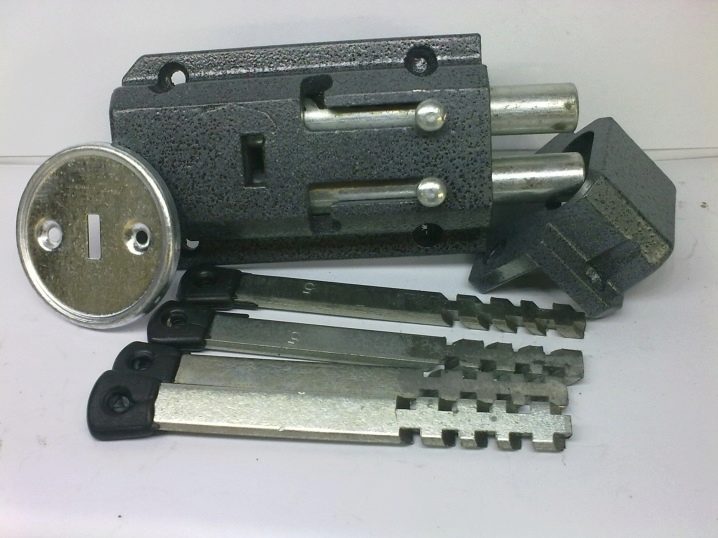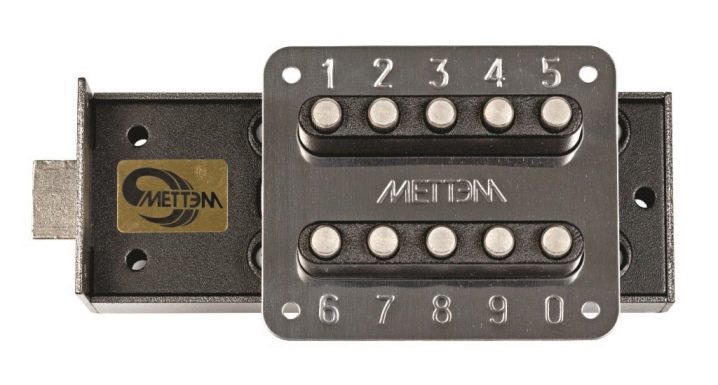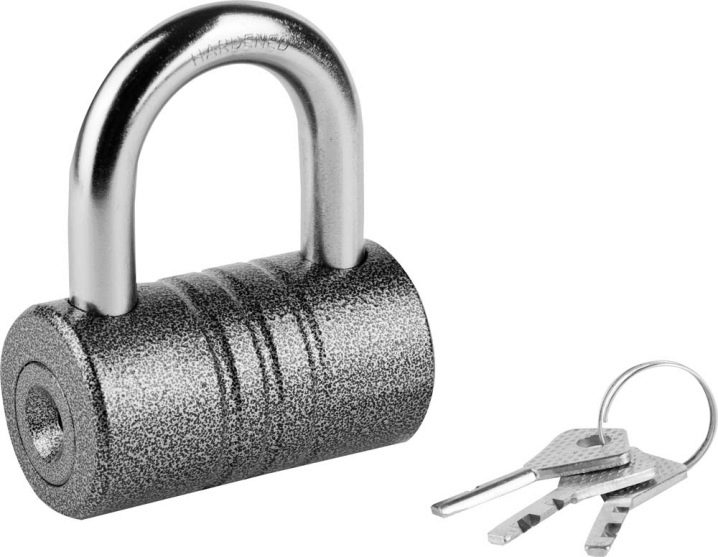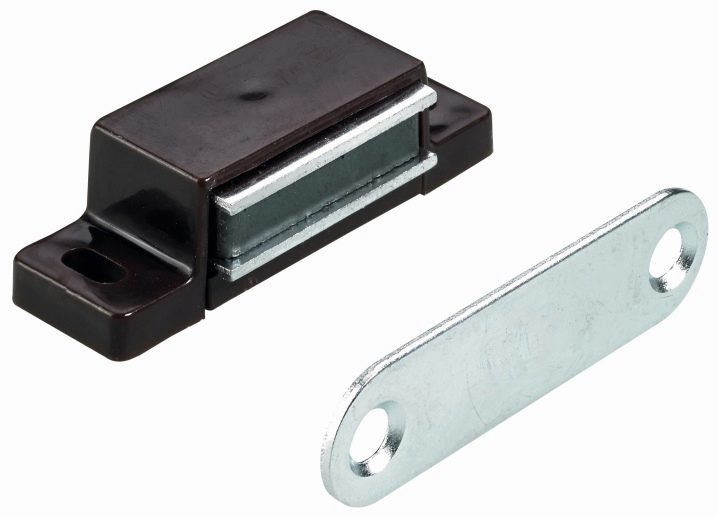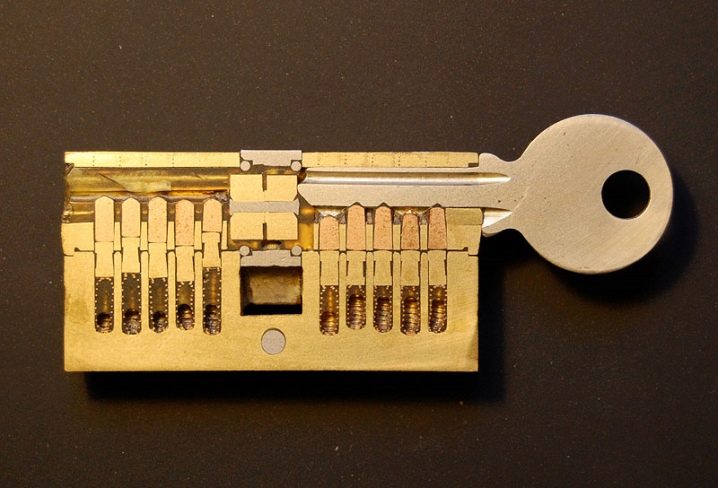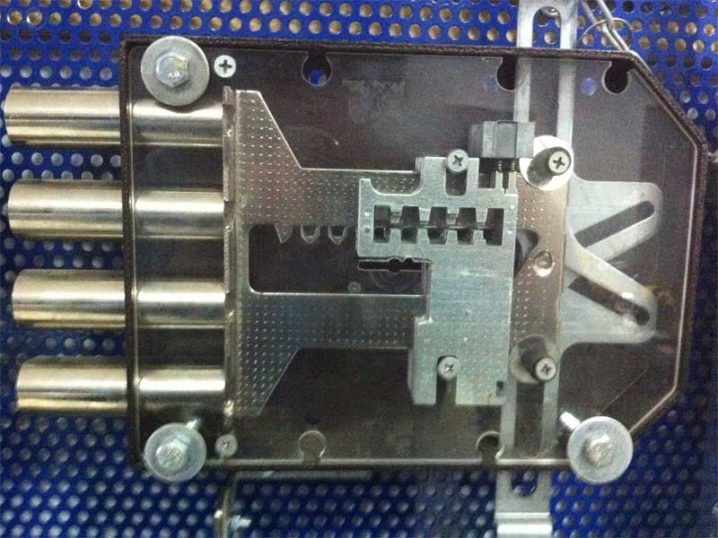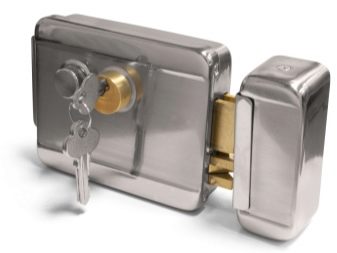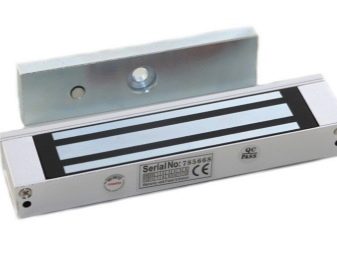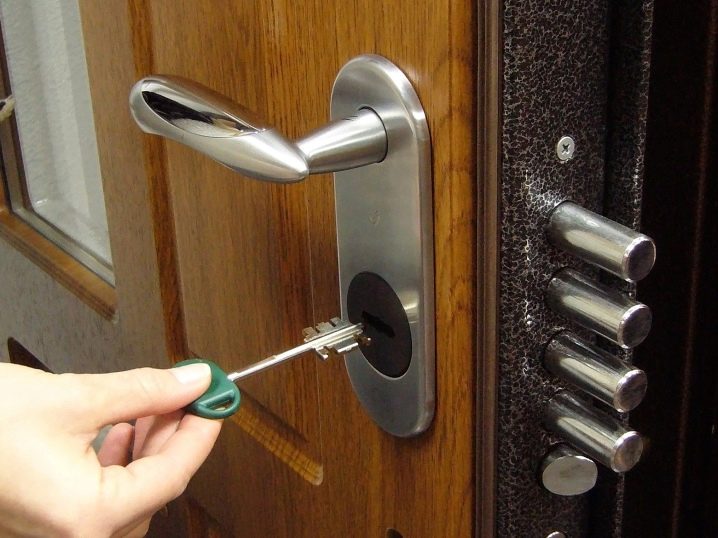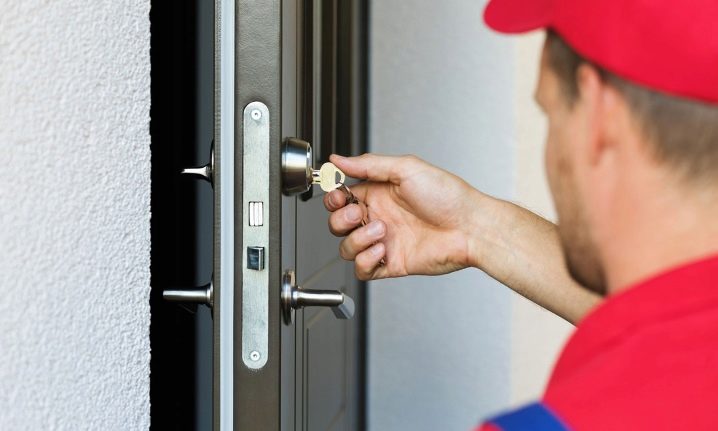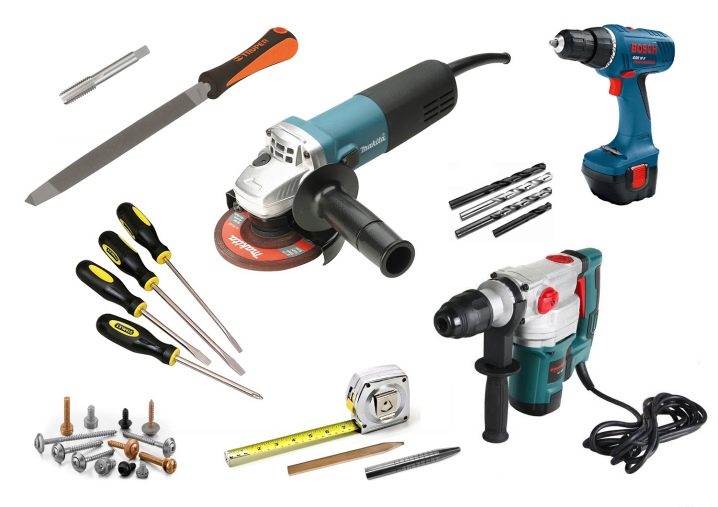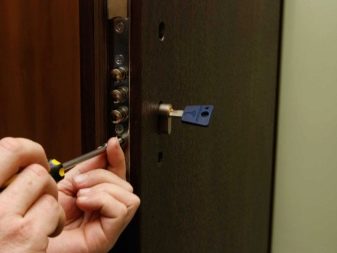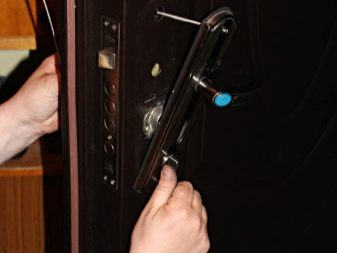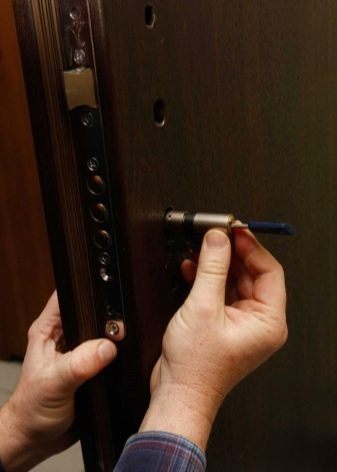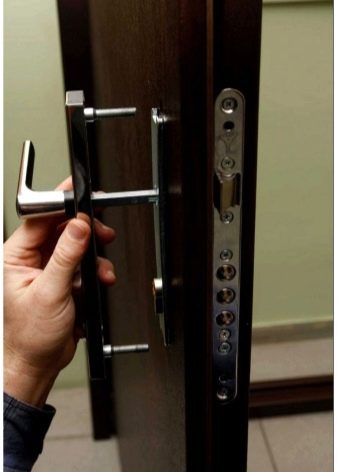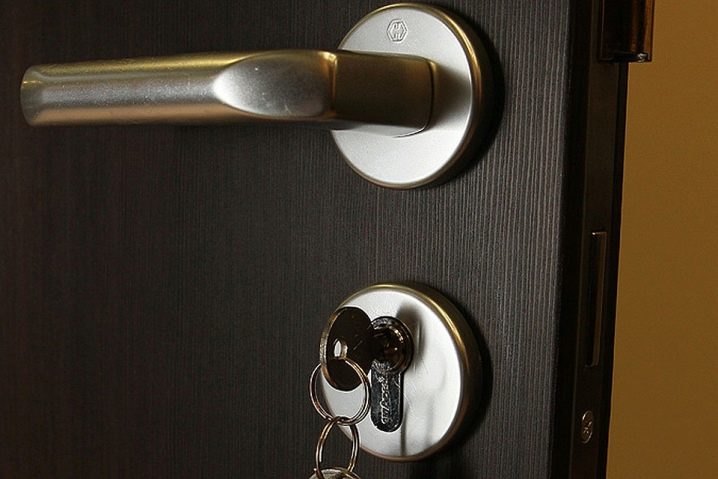How to put locks in metal doors?
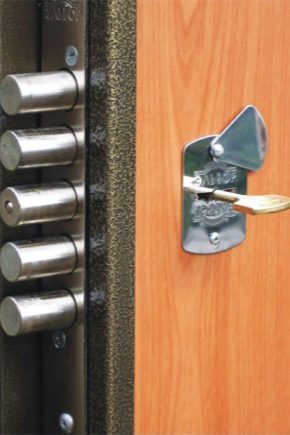
If the principle of “my home is my fortress” is used, and a metal entrance door was purchased for the purpose of protecting their apartment or house, then it is necessary to take into account that a high-quality locking mechanism is necessary to ensure security. It is best to entrust the installation of the castle to specialists, but it is also quite possible for an independent installation. But first you need to find out what types of locking devices exist.
Varieties of castles
On the modern market there are many locking mechanisms. They differ in the method of installation and the degree of reliability and secrecy.
According to the method of installation door devices are divided into several options.
- Overhead. The main part of this locking mechanism is located on the outside of the door. Installing this type of lock is usually not a problem.
- Mortise. Crashes into the body of the door. For proper installation is required to correctly select the recess in the door body.
- Built in. Embedded in the door at the factory. Do-it-yourself installation is almost impossible, as the entire door will need to be dismantled.
- Hinged. This is a rarely used type of locking device. Differs in simplicity of installation - it is necessary to weld only two eyes and to hang up the device.
In terms of security and secrecy, locking devices are divided into the following categories:
- cylinder;
- suvaldnye;
- latch;
- code;
- disk;
- magnetic.
The first two types (lever and cylinder) are most common.
The cylinder product consists of a lock cylinder and an internal mechanism. It can be both laid on, and mortise. It has a high level of security. The advantages of this locking mechanism include the fact that in case of loss of a key, only a change of the larva is necessary, and not dismantling of the entire device.
The design of lock locking mechanisms is composed of a core and a set of suvald-code plates. The greater the number of plates, the higher the degree of reliability and security of the lock.
Electromechanical and electromagnetic locking devices are becoming more common. They are distinguished by an even greater level of protection against unauthorized entry.
The design of the electromechanical lock uses a combination of mechanical and electrical elements with an electronic mechanism. As the name implies, electromagnetic locking devices consist of an electromagnet built into the body of the lock, and metal elements. The advantages of these products are a long service life and a high level of safety.
How to choose?
Before you buy a lock on a metal door, you need to listen to the recommendations of people with experience in this field.
Also need to take into account some tips.
- You need to purchase products from well-known manufacturers. It is worth asking online reviews on the proposed models.
- The miser pays twice, so the cheapness of the locking mechanism should not be a selection criterion.
- It is necessary to duplicate the lock device of another type.
- You can get advice from the seller about the features of the device and use of the product.
Additionally, you need to take into account the classes of resistance to hacking.
- First class locks are the most unreliable devices in this regard. They are used not for entrance doors, but for interior and wardrobe constipation.
- Second-class products are characterized by an average level of burglary.
- The locking devices of the third and fourth classes are the safest. They are used to protect bank vaults, safes and other protected premises.
Lock Class | Security level | Action to break, not less, N | Minimum time of unauthorized hacking, minutes | Field of use | ||
Hasp and planochka constipation | Bolt construction | Joint front planochka with a box mortise | ||||
I | Small | ≈2940 | ≈785 | ≈785 | ≈1-3 | Auxiliary and door between rooms |
II | Normal | ≈2940 | ≈785 | ≈785 | ≈5-10 | Doors to enter residential apartments |
III | Elevated | ≈4900 | ≈1500 | ≈1960 | ≈10-15 | Doors to enter residential apartments, non-residential premises where money is kept, material values, and / or security |
IV | Tall | ≈6860 | ≈1960 | ≈4900 | ≈30-40 | Doors to enter residential apartments, non-residential premises where money is kept, material values, and / or security |
Preparation for installation
Preparing to install the lock is as follows:
- in the purchase of the locking mechanism;
- in the preparation of the necessary tools and fasteners;
- in the mark of the necessary areas for the elements of the castle.
Required tools
In order to mount a new or replace an old locking device, no special tools are needed. Everything you need is included in the usual set:
- angle grinder (Bulgarian);
- electric drill;
- sharpened metal rod;
- measuring ruler and pencil;
- screws, screws;
- screwdriver or screwdriver;
- file;
- threaded tap.
Markup
One of the first steps in the installation process of the door lock is the marking of the mounting and fastening points. It is necessary to choose a comfortable height for the location of the locking mechanism, attach the lock to the door and trace the contours. Mounts should be noted.
Installation technology
The main problem of mounting the locking device in iron doors is that you need to process a very durable material. The method of installation of the locking mechanism depends on its type.
The easiest way is to replace the old lock with a new one, since the main grooves are already ready. You may have to expand them a little, drill new holes for fasteners, if they do not match the old ones. Work will still be less than when installing the first lock.
Insert
When replacing the old door mechanism you need to remove it. Elements of the new lock should be inserted into the formed voids. If all dimensions are the same, the entire installation will be reduced to its fastening.
Sidebar
For mounting the mortise model, it is necessary to make holes for the handle, the well and the groove for the mechanism itself.
Initially, you should mark the location of the recess for the lock mechanism in the end of the door. Approximate height of the lock is 1-1.5 m. Drill holes along the edges of the marked area and cut a groove with a grinder. The edge of the groove should be treated with a file to grind the resulting irregularities. To prevent the drill from slipping, you must pre-mark the punch.
Then you need to insert the lock into the prepared groove and mark the places for fixings. After that, you need to drill the holes for the screws and mark the thread.
Next, you need to note the place of the holes in the canvas for the well and the handle, after which they are cut. Then you need to put the mechanism in the groove.
Now you should check the functioning of the lock. If the problem is not found, then the pen and cover can be attached. The core of the mechanism needs to be lubricated and the key is turned to the locked position.
Mark the holes on the door frame and make a drill for the deadbolts, fix the strike plate on top.
To prevent shearing, you need to check the functioning of the lock mechanism after each completed step.
The difference in mounting a patch type locking device is that the main body of the lock is placed on the plane of the door, and not inside it.
It is necessary to make a markup of installation sites for fasteners, pins, well location and other components. To ensure the comfort of using the latch overhead mechanisms set above mortise.
It is necessary to install pins for fastenings, drill a hole in the body of the door for the hole and install the mechanism on the pins. After that, you need to check the operation of the device.If no malfunction is found, the mechanism should be screwed to the door leaf. From the outside you need to attach the patch plate.
After that, it is necessary to mark on the door box a place under the invoice block, cut a groove according to the marks, make a thread for fasteners. Next you need to attach the response element, which is designed to enter the lock bolts. It is very important to install this unit correctly, otherwise the bolts will not be able to get into the holes intended for them.
Operation check
At each stage of the door lock installation, it is necessary to check the correctness of the arrangement of the structural elements and the functioning of the locking mechanism. The slightest inaccuracy can lead to the fact that the door will be difficult to close or open, and sometimes even impossible. It should also be borne in mind that when such problems are detected, it is likely that the lock mechanism will have to be completely dismantled and installed in another place.
As you can see, the installation of the lock on the iron door with your own hands is very real.
How to embed the lock into the metal door, see the video.
